Baking Tips: How To Get Good Results Every Time
- By Jennifer Segal
- Updated February 14, 2024
- 66 Comments
- Leave a Review

This post may contain affiliate links. Read my full disclosure policy.
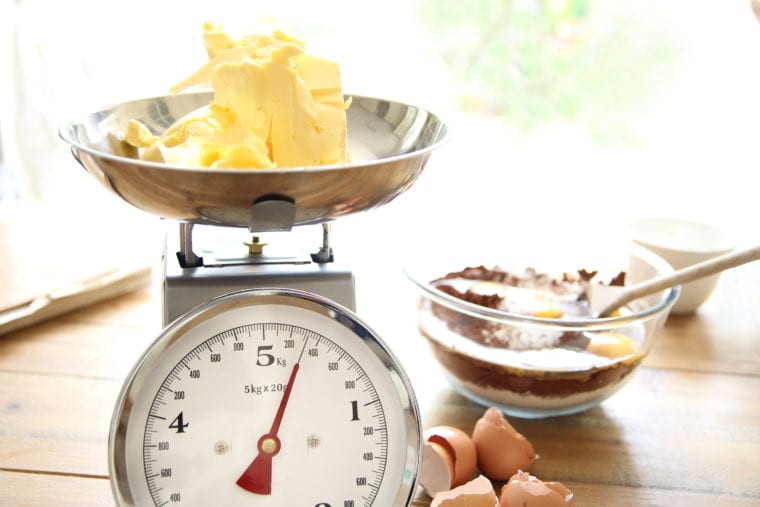
It is often said that cooking is an art and baking is a science. There’s some overlap – you definitely need technical skills in cooking and artistry in baking. But in cooking, you create a dish as you would a painting, tasting and adjusting as you go while adding your own personal style. When baking, you need to be precise and follow the recipe, otherwise your cakes will fall, your cookies will spread, your pie crusts will be tough, and so on and so on. But with these baking tips, there’s no need to be intimated by baking! Most baking mistakes are easily averted by understanding the basics, avoiding substitutions, and following a few simple rules.
1. Measure Properly
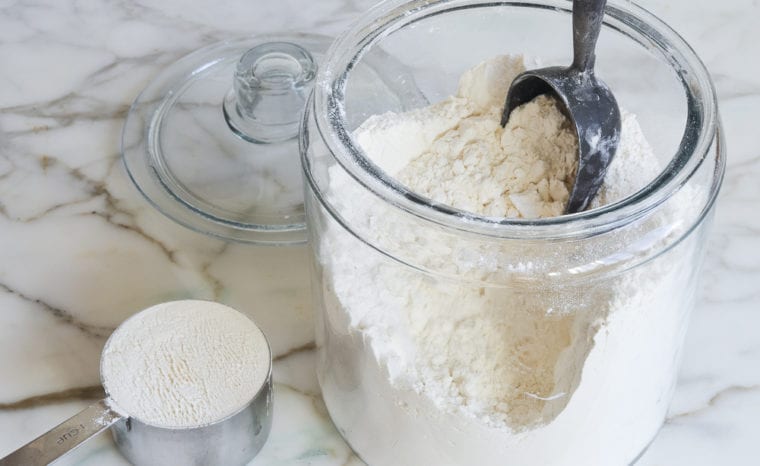 Of all the baking tips, this is the number one most important rule in baking! Ideally, you should weigh your ingredients on a digital scale but if you don’t have one, the proper way to measure dry ingredients is using the spoon and level method: spoon the ingredients into a dry measuring cup and level or “sweep” the top with a straight edge. This might seem nit-picky but it’s important. A cup of flour measured in volume can vary by several ounces, so if you scoop it into the measuring cup and pack it in, you’ll end up with way too much flour and your baked goods will be dry. The only ingredient that you should ever pack into a cup is brown sugar.
Of all the baking tips, this is the number one most important rule in baking! Ideally, you should weigh your ingredients on a digital scale but if you don’t have one, the proper way to measure dry ingredients is using the spoon and level method: spoon the ingredients into a dry measuring cup and level or “sweep” the top with a straight edge. This might seem nit-picky but it’s important. A cup of flour measured in volume can vary by several ounces, so if you scoop it into the measuring cup and pack it in, you’ll end up with way too much flour and your baked goods will be dry. The only ingredient that you should ever pack into a cup is brown sugar.
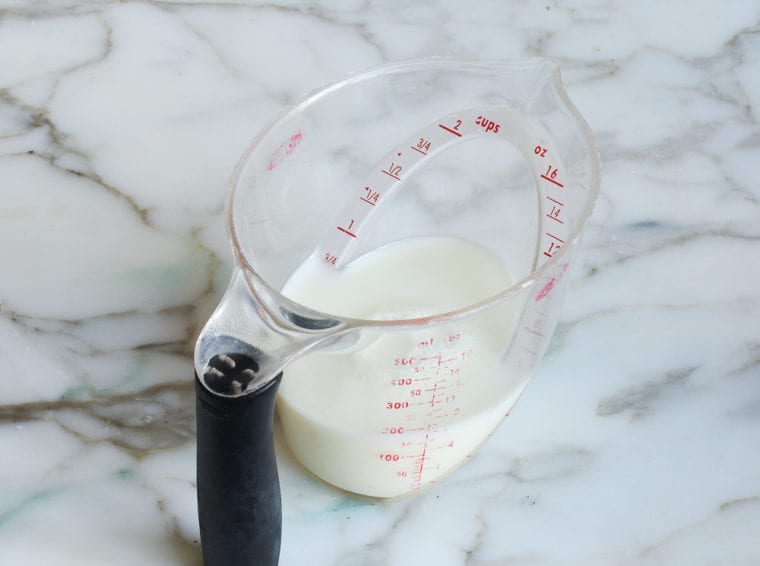 Liquid ingredients should always be measured in clear measuring cups with pour spouts and gradations on the side of the cup. I love the ones that allow you see the measurement marks from overhead (the one pictured right is by OXO).
Liquid ingredients should always be measured in clear measuring cups with pour spouts and gradations on the side of the cup. I love the ones that allow you see the measurement marks from overhead (the one pictured right is by OXO).
2. Invest in a good mixer
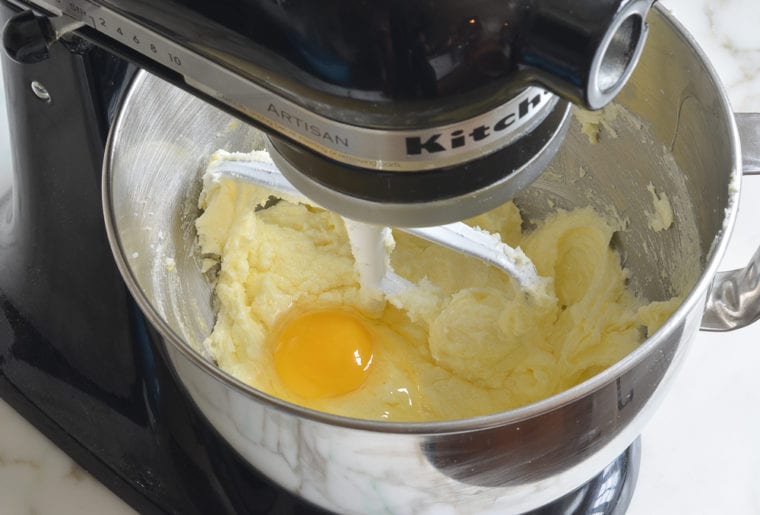 I have a 5-quart Kitchen-Aid mixer that I leave on the countertop and use for just about everything. If you buy a good one, it will last for decades—mine once fell on the floor and it still works! An electric hand mixer is a good alternative.
I have a 5-quart Kitchen-Aid mixer that I leave on the countertop and use for just about everything. If you buy a good one, it will last for decades—mine once fell on the floor and it still works! An electric hand mixer is a good alternative.
3. Use Room Temperature Ingredients
When a recipe calls for room temperature ingredients, it’s important to comply. Cold butter cannot be creamed, and cold eggs can shock and curdle a batter. It’s best to leave ingredients on the countertop overnight, but I confess that I almost never remember to do this. To quickly bring eggs to room temperature, place them in a bowl and run them under warm tap water for a few minutes. If you need to bring butter to room temperature, you can use the microwave but keep a close eye on it because if it gets too soft, it can ruin a recipe. I usually cut the sticks into 1-inch [2.5 cm] pieces and zap them at 50% power in 10-second intervals until softened.
4. Check Your Oven Temperature
It’s a good idea to check your oven temperature every so often to be sure it’s accurate. Along the same lines, when you’re baking, try not to open your oven to peek until the recommended cook time is up. Otherwise, you’ll let cool air in, which interrupts the baking process. The only exception to this rule is to rotate pans halfway through baking if you’re cooking on multiple pans or if your oven has a hot spot; just do it quickly so you don’t cool down the oven.
5. Don’t Make Substitutions
Unfortunately, there are no good substitutes for all-purpose flour, sugar, butter or eggs. Remember, baking is chemistry; experiment at your own risk! However, the “recipe police” won’t come after you if you change little things that don’t alter the chemistry of the recipe, like adding nuts, or swapping orange zest for lemon zest.
6. Use A Light Hand
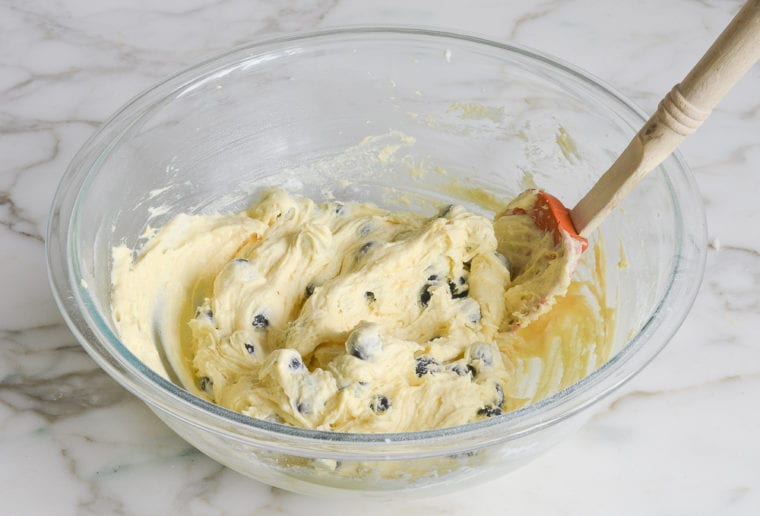
If you’ve spent any time baking, you’ve likely come across the phrase “Do not overmix.” This is because once you add flour to a recipe, mixing encourages gluten development, which creates a chewy or tough texture. We knead bread dough to activate gluten so that the bread has a good chew factor—but we don’t want that in tender cakes and muffins! When a recipe says, “do not overmix,” stir only until the batter is uniform.
In scones and biscuits, recipes often instruct, “Do not overwork the dough.” Again, you don’t want to activate the gluten, and you also don’t want to warm or melt the butter—the cold chunks of butter steam in the oven, lifting the dough to make tender and flaky baked goods.
7. Understand Leavening Agents
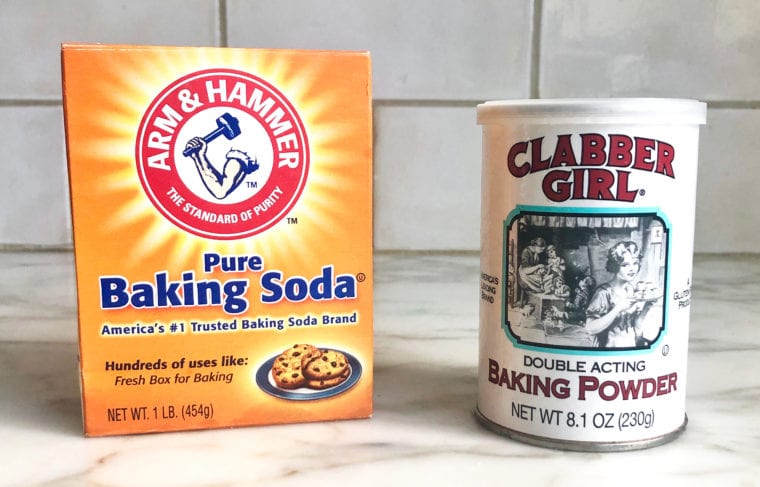
Baking powder and baking soda are used in many recipes to make baked goods rise without the need for yeast. They are not interchangeable. Baking soda needs acidic ingredients to activate, so it is used in recipes that contain buttermilk, lemon juice, cocoa powder, etc. Baking powder needs only liquid to activate, so it is used in recipes that do not contain acidic ingredients. Some recipes, like chocolate chip cookies, call for both baking powder and baking soda. These recipes typically contain some sort of acidic ingredient, like brown sugar, but baking soda alone is not enough to lift the volume of batter in the recipe so baking powder is added to pick up the slack.
8. Add Ingredients in Little Piles
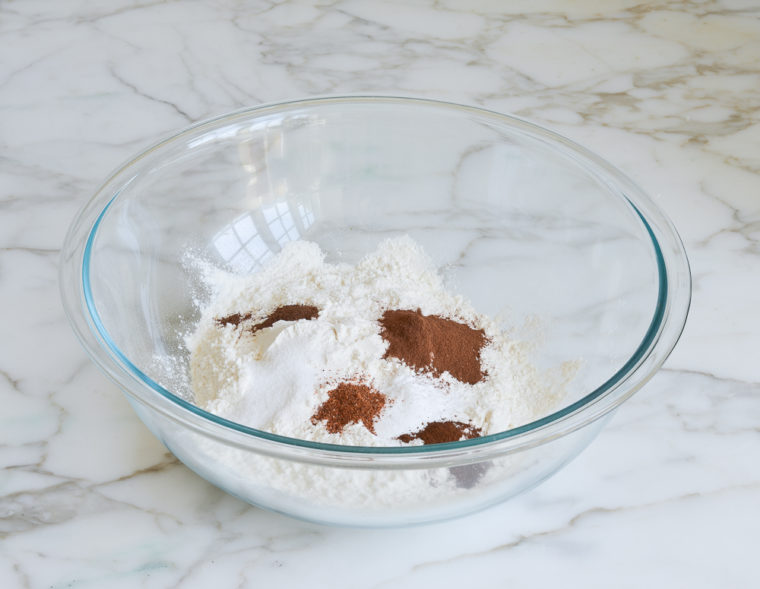
Maybe it’s just me, but I often lose track of what I’m doing in the kitchen. I always add ingredients to the bowl in neat little piles when I’m baking so that I can see what I’ve already added.
9. Opt for light-colored metal pans if possible
Light-colored pans are often preferable for baking over dark-colored metal or glass pans. This is due to light metal pans’ ability to distribute heat more evenly and prevent excessive browning or uneven baking. The reason behind this is that dark metal and glass pans tend to absorb and retain more heat, which can lead to faster and potentially less predictable browning. If you only have dark metal or glass baking dishes, they will work; just keep a close eye on what you’re baking and reduce the heat by 25°F if it looks like it’s starting to brown around the edges.
10. Line Pans With Parchment Paper or Heavy Duty Nonstick Foil
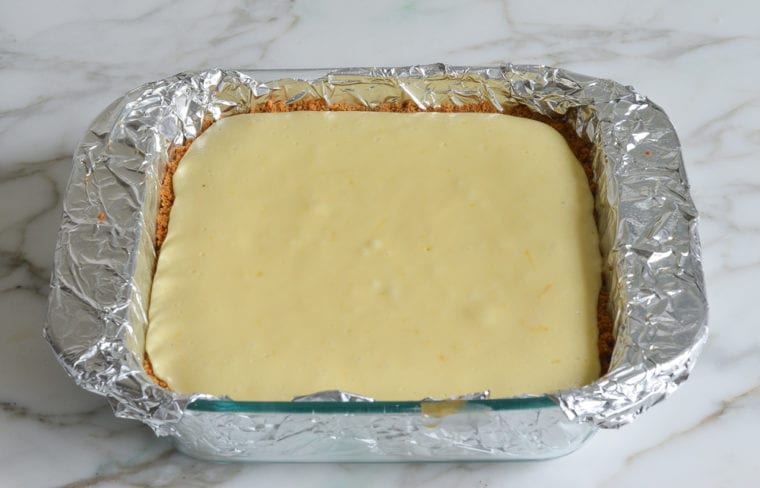
Parchment paper is ideal for lining cookie and cake pans, and provides easy removal and cleanup. Plus, it can be reused again and again. Or use professional-style silicone mats; they are more durable than parchment, and can be used forever. For bar cookies, make removal easier by lining the baking pans with heavy-duty aluminum foil coated with cooking spray. Just lift the block out onto a board and cut! Be sure to use good quality foil, such as Reynold’s Wrap Heavy Duty; inexpensive brands can stick.
11. Prepare Baking Pans Properly
I usually use nonstick spray or nonstick spray with flour for quick, effective coverage. Hold the pan over the sink or open dishwasher to avoid a mess.
12. Measure and Scoop Batter Evenly
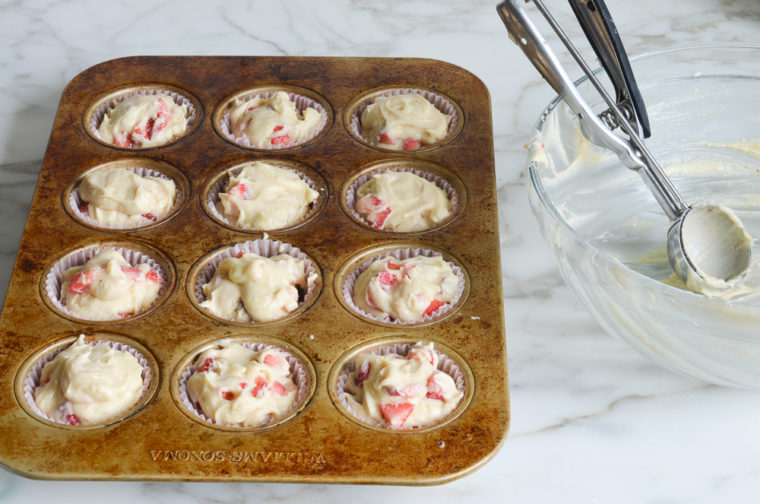
Use cookie scoops and ice cream scoops with triggers for measuring cookie dough, muffins, and cupcakes. The scoops will be more consistent, the baked goods will cook more evenly, and it’s a much faster way to get the job done.
13. Use Quality Ingredients
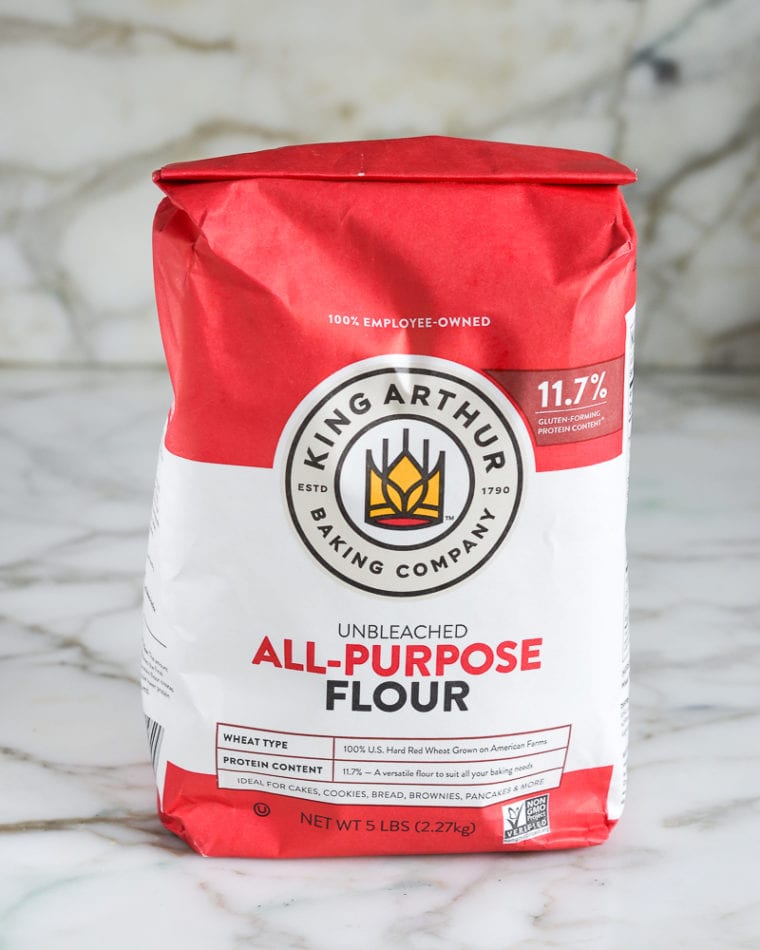 Believe it or not, the brands you use can make a huge difference in baking, especially when it comes to flour. When I bake, I use the following ingredients (unless specified otherwise):
Believe it or not, the brands you use can make a huge difference in baking, especially when it comes to flour. When I bake, I use the following ingredients (unless specified otherwise):
- Flour: King Arthur Flour (This brand has a slightly higher protein content than many other brands of flour, and it gives baked goods more structure.)
- Butter: Unsalted Land O’ Lakes
- Vanilla: McCormick Pure Vanilla Extract
- Eggs: all of my recipes are made using large eggs.
14. Make Adjustments at High Altitude
Baking at a high altitude requires adjustments for best results. These are some general guidelines from King Arthur Flour (click the link for more detailed guidelines); depending on the elevation where you live, some adjustments may be necessary:
- Oven temperature: Increase 15 to 25°F; use the lower increase when making chocolate or delicate cakes.
- Baking time: Decrease by 5-8 minutes per 30 minutes of baking time.
- Sugar: Decrease by 1 tablespoon per cup.
- Liquid: Increase by 1 to 2 tablespoons at 3,000 feet. Increase by 1-1/2 teaspoons for each additional 1,000 feet. You can also use extra eggs as part of this liquid, depending on the recipe.
- Flour: At 3,500 feet, add 1 more tablespoon per recipe. For each additional 1,500 feet, add one more tablespoon.
You may also like
- Metric Conversions for Baking & Cooking
- How to Freeze Cookie Dough
- My Favorite Pie Crust
- Whipped Cream
- Baking Soda vs. Baking Powder
- How to Make Buttermilk
- Cake Pans to Cookie Sheets: 16 Essential Baking Pans
Comments
Add a Comment Cancel reply
This site uses Akismet to reduce spam. Learn how your comment data is processed.
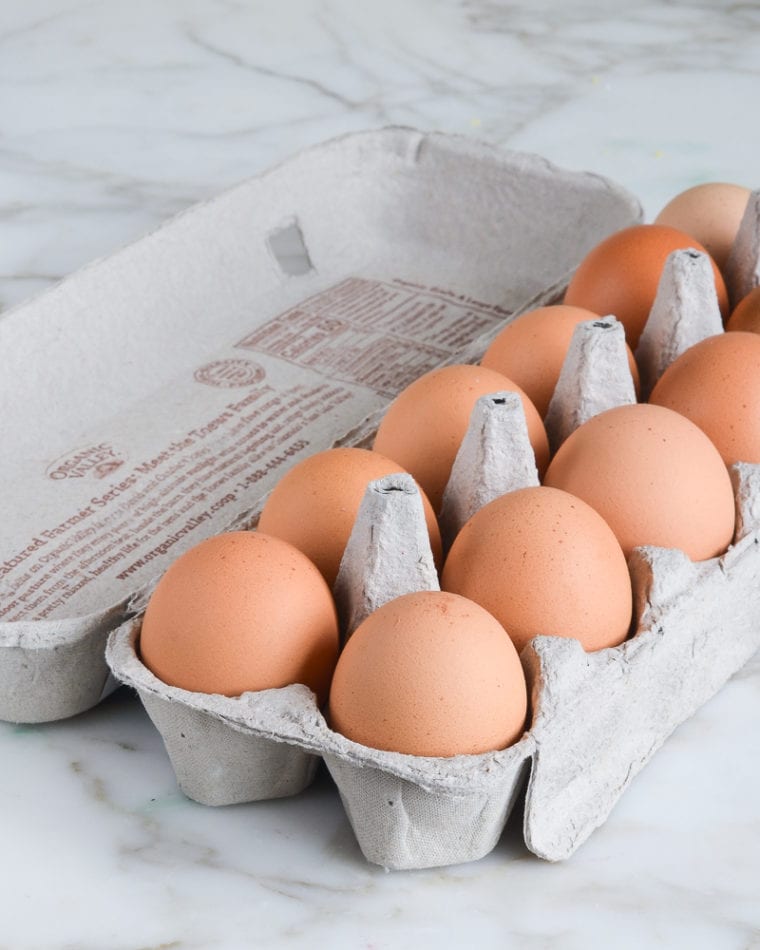
Hi Jenn, appreciate your tips. I have a kitchen scale & use it when baking all the time. I was wondering what are the grams in 1 cup flour in your cookie recipes. I follow another blog & she uses 5 oz or 142 grams as her measurement. I’ve tried using that info with other recipes but found that it be too much flour. I know every recipe creator is different so just wondering how I would covert yours to either grams or oz. Thanks so much!
Hi Kathy, I know you’ll find some variability out there. I use the spoon and level method for measuring flour and have weighed it many times. I consistently come up with 130 grams per cup. Hope that helps!
Yes it really helps, once I started using a scale I have never just gone by cups. I have found my cookies are so much more consistent this way. I appreciate the fast response Jenn! Can’t wait to try that brisket recipe you posted.
I will be making cookies for weekends.
I’ve been making cut out cookies for years and all of a sudden when I bake them some of the have a nasty bitter taste to them . I’ve tried hand mixing , using a mixer I measure everything and buy new stuff not sure what’s going wrong
Hi Rhonda, Happy to help troubleshoot—can you share the recipe?
If you replied to Rhonda’s question, I’d also like to know the reason her cookies tasted bitter. I had this happen with biscuits, even after whisking all the dry ingredients together. Took one bite and it was so bitter I threw it out. My baking powder and soda are all fresh so baffled.
Thank you,
Kathy
Hi Kathy, is there any chance there were a little chunks of baking powder or baking soda after you whisked the dry ingredients together? If not, you may want to try an aluminum free baking powder. Some people are just more sensitive to the flavor the aluminum compounds (which activate the leavening process) add.